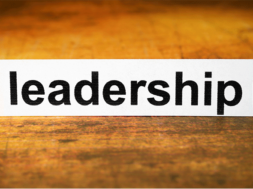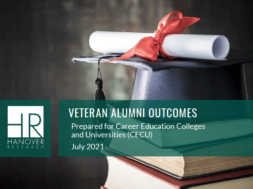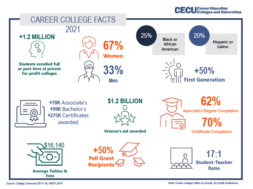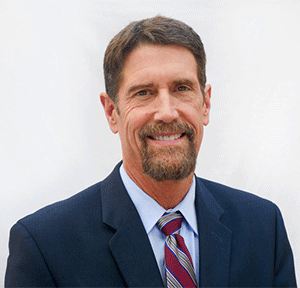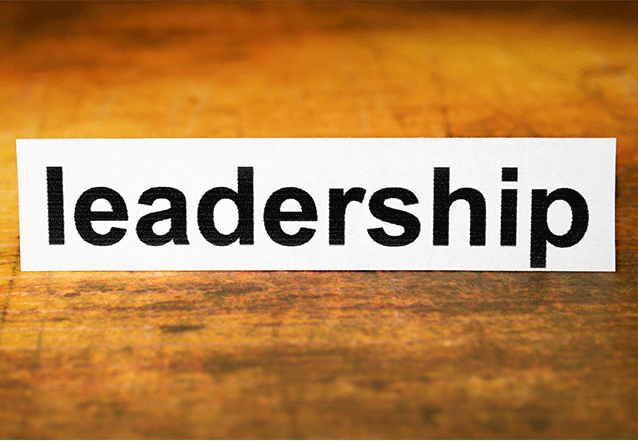
Higher Education is Facing its Greatest Challenges Since WWII
The Good News is That We Know What Works to Survive and Thrive Despite the Current Decline
By Wallace K. Pond, Ph.D., Education Practice Partner, Top Gun Ventures
It is not surprising that many people in the general public are unaware of the breadth and depth of the crisis facing higher education over the last decade, but it continues to amaze me how much ignorance there is within higher education itself about the specifics of the challenges facing academe today. In the last few months I have presented data on enrollment declines, school mergers and closures, and other economic statistics to the membership of two higher education professional organizations. In both cases, the educational leaders in attendance were broadly unaware of even the basic statistics. The same is true for the higher education institutions with which I consult.
Almost no one knows that 2019 was the eighth consecutive year of enrollment declines across all of U.S. higher education or that 3,000,000 fewer students attend colleges and universities today than in 2010 (including a decline in African American enrollments of 13%) or that institutions of higher education (IHEs) have increased their debt by 64% (and at least a quarter of all private colleges are operating in the red) or that tuition has increased by 40% while wages have stagnated or that states have reduced funding for public institutions by $9 billion in the same period!
Likewise, it is news to most that over 1,200 colleges have closed and 2,000 brick and mortar learning sites overall are no longer operating across the country compared to a decade ago.
These same individuals are also typically unaware of the geographic distributions of the declines with the worst hit regions being the Northeast and Midwest with decreased enrollments in 34 states overall. While the closures so far have been disproportionate for institutions with a for-profit tax status, most in higher education do not know that the enrollment declines are spread across all sectors of higher education (community colleges are down 3.4% in the last year alone) with the greatest risk for the foreseeable future being in private, nonprofit institutions with less than 1,000 students.
On the other hand, there is no lack of stress and distress among those same individuals in post-secondary educational institutions and professional organizations, who are feeling the effects of substantially declining enrollments (and revenue), consolidations, layoffs, ongoing expense cuts, closures, etc. They are just unaware of the actual data and the underlying causes for the declines. As a result, their institutions are almost wholly unprepared to address the issues they are facing.
Within the proprietary sector, the contraction has completely reshaped the industry. Some data points include:
- One million fewer students attending career colleges since the mid-2000s
- Over 1,000 career colleges closed since 2014
- About 125 closed in the last two years
- A 7% enrollment decline in four year, for-profits since 2017
What external factors have caused the current crisis?
While the Great Recession finally made higher education accountable to market forces, there are five primary external causes of the extended enrollment declines, which have conspired to fundamentally alter the post-secondary education landscape. Those factors are:
- Demographics (declining birthrates)
- The economy (low unemployment)
- Economics (the cost of education and debt)
- Societal opinions about higher education (they have shifted broadly negative)
- Growing alternatives to college programs
Within the proprietary sector, it is also evident that ongoing, targeted “attacks” by the U.S. Department of Education, other regulators, politicians, and media going back to at least the mid-2000s exacerbated the enrollment declines in that part of higher education.
This article does not allow for an in-depth discussion of how each factor has negatively affected enrollment, but you can see an excerpt of a recent national webinar presentation here that provides much more analysis. In short, there are simply fewer traditional students available, who are less able and/or willing to borrow to pay drastically increased tuition, at the same time that industry is providing many alternatives to traditional higher education programs. Ironically, post-secondary education overall is growing, but traditional degree programs are declining. The value proposition for many students is simply no longer compelling enough to set aside employment or take on debt in order to enroll in a degree program – and the demographic challenges are baked in for at least another generation.
It is also clear that the “recovery” from the Great Recession is unlike previous recoveries in that the overall value of employment today is less for a large majority of Americans than it was before the recession.
In other words, unemployment is now lower, but only about 20% of workers are financially better off. Moreover, millions of fewer Americans own their own homes now and about a third work in the “gig economy” at lower wages and without benefits or job security.
So, despite a statistically “strong” economy, individuals and organizations are feeling stress usually associated with recessionary times. According to the Federal Reserve:
- Unprecedentedly unequal distribution of wealth and liquidity
- Forty percent of American adults don’t have enough savings to cover a $400 emergency expense
- Forty-three percent of households aren’t earning enough to cover the combined costs of housing, food, child care, health care, transportation and a cellphone
- Forty-Four percent earn $18,000 or less annually
- Fifty-seven million workers are in the gig economy
As a result, some number of the 3,000,000 people who are not attending college today are simply unable to do so for financial reasons. And some number of students who would have attended a college or university are taking advantage of the massive expansion of entry-level training within industry. Amazon alone has committed over $700,000,000 to train employees in everything from cybersecurity and logistics to computer science – at zero cost to the employee. Similar programs exist in aviation, health care, transportation, and other industries as well.
The good news is that despite the deep, structural challenges facing higher education today, we know what the characteristics are of the institutions that are managing to thrive in the current environment. Although every IHE has its own particular challenges and opportunities, there are common threads across the schools that are finding success, one of which is simply that they understand the reality and have a plan to address it. Beyond that, a careful analysis of the characteristics common to institutions that have managed to hold their own and even grow during the national downturn are things that any college or university can control and achieve. They are:
- Dynamic leadership
- Capacity to innovate
- Deep industry collaboration
- Aggressive partnerships
- Alternative and high margin revenue streams
- Differentiation in the market (programs, services, delivery, etc.)
- Clear customer value proposition
- Licensure programs/programs required for employment
- Alternatives to traditional degrees
- Focus on sustainability
- Finance as a core competency
- Really, really good at basics
- A culture that promotes success (entrepreneurialism, risk taking, collaboration, etc.)
You will notice that the first characteristic, dynamic leadership, is bolded because everything else depends on it. There is not a single, thriving institution that got there with mediocre or status quo leadership. The unfortunate reality is that higher education has a significant leadership deficit relative to the skill sets that are required in the current environment. It is also true that the academy is a very poor incubator for the leadership traits and abilities that IHEs need now. Regardless, boards with the vision and courage to hire entrepreneurial, innovative, people leaders have achieved significant benefits. In a growing number of cases, those leaders are coming from outside of academe, which has its own additional advantages.
The other shared characteristics relate to innovation, outreach, culture, business acumen, operational excellence and a long view toward the future. None of what we’ve learned about successful institutions is “rocket science,” but much of it requires amenability to change and a culture that supports shared commitment and very different ways of behaving. Not every thriving institution matches the model provided above precisely. Each emphasizes things that are unique to its history, market, mission, and local issues, but all have been open to leaving the status quo behind in key areas. Some interesting examples of the highest growth institutions include:
- Southern New Hampshire University (marketing and student services)
- Grand Canyon University (affordability, affinity, online)
- Western Governors University (CBE and referrals)
- Pima Medical Institute (student value, partnerships)
- Arizona State University (partnerships and marketing)
- University of the Cumberlands (online graduate programs)
- Colorado Christian University (affinity, high school partnerships)
- Capella/Strayer Uuniversity (CBE, marketing, partnerships)
- Fortis-SLC (culture, market-driven programs)
Summary
The fact is that we are nowhere near the bottom of the higher education shake-out. The mismatch between supply and demand, the financial exigency that many IHEs are already experiencing, demographics, industry alternatives to higher education, etc., are all going to make the situation worse before it gets better. On the other hand, opportunities for those institutions that have many of the characteristics noted above and that define what they do as post-secondary education writ large rather than higher education, are likely to survive and even thrive.
While building a firewall against obsolescence is a complex and long-term project, the first step for at risk IHEs (which is most of higher education) involves self-education on the current reality and elimination of all denial about that reality.
Whether an institution pursues a facilitated process or handles the process in-house, it must be approached as an exercise with existential implications and a willingness to make even foundational change, cultural and strategic, in the interest of long-term sustainability.
And most importantly, post-secondary institutions must pursue and support a completely new kind of leadership. The knowledge, skills, and abilities that worked in a previous era are not only inadequate today, they can actually be detrimental.
DR. POND, Education Practice Partner at Top Gun Ventures, has been a mission-driven educator and leader for over 30 years. For the last 20 years, Wallace has been a senior leader in higher education, holding both campus and system level positions overseeing single and large, multi-campus and online institutions of higher education in the U.S. and internationally. He has served as chancellor, president, COO, CEO, and CAO (Chief Academic Officer), bringing exceptional value as a strategic-servant leader through extensive experience and acumen in strategic planning, change management, organizational design and development, P&L, human capital development, innovation, new programs, and deep operational expertise among other areas of impact.
Wallace began his career as a high school teacher and adjunct professor, and spent six years in the elementary and secondary classroom working primarily with at-risk youth. He was also a public school administrator and spent another six years as a full time professor and administrator in the not-for-profit higher education sector, working in both on campus and online education, bringing education to underserved students. Additionally, Wallace has over 15 years of executive, private sector experience, creating a unique and powerful combination of mission-driven and business focused leadership and insights.
Dr. Pond has lived, worked, and studied in North America, Latin America, the Caribbean, Europe, Asia, and the Middle East. He has presented nationally and internationally and is the author of numerous articles and the book, “The Lights Are On, Is Anybody Home? Education in America.” His new book, “Leadership in the Real World,” will be published in early 2020.
Wallace, a licensed pilot, has a BA in Spanish, an M.Ed. in Human Services and Human Resource Education, and a Ph.D. in Education.
Contact Information: Wallace K. Pond, Ph.D. // Education Practice Partner // Top Gun Ventures // wkp@wallacekpond.com, wallace@topgunventures.com // www.WallaceKPond.com, www.TopGunVentures.com
